I love rivers. Growing up, our cottage was on a river in central Pennsylvania. Even though I now hail from the Land of 10,000 Lakes, there’s something about rivers that still draws me in. Recently, I had the opportunity to go back and see the river near where I spent so much of my childhood. My eldest daughter described it as a “muddy mess”, but I thought it was beautiful. I was trying to figure out what was it that I liked so much more about a muddy river than a still, stable lake like the ones my daughter is growing up enjoying. To me, rivers are symbols of movement, progress, a journey and flow…
In this series, we’re looking at the Unexpected Experience for patients in the Emergency Department and last time we examined what’s most important to patients: the waiting. As promised, in this blog we’ll begin to look at several key strategies for addressing the wait times in the ED but here’s the tie back to the river: it all comes back to flow!
Improve Your Flow
Lean process improvement is a methodology that grew out of the Toyota Production System and is aimed at reducing waste, saving time, and improving flow. If you think about it, the journey through the Emergency Department is one long flow for patients. Lean is an effective tool to describe your current state process and begin to identify areas of waste in order to make improvements. My first Lean project was in the ED of a large metropolitan hospital. We were working to improve the bed order process for patients being admitted. To do this we incorporated a combination of observations, process mapping with staff and leaders, and timestamp data from the electronic medical record (EMR). Based on all of this we were able to identify key bottlenecks in the flow and develop effective strategies for improvement. This is just one example, but Lean is an effective tool that many organizations have adopted to map out their various processes and flows through the ED. It is a great methodology to use to help engage staff, identify wasted time, and start to generate improvements. My suggestion to make these efforts even more effective is to be sure to include a patient and/or family member on your process improvement teams.
Standardize Your Processes
One result of most organization’s Lean (or other flavor) process improvement activities, is the ability to standardize and track key processes within the department. As an organization, timing out how long on average it takes to get a complete blood count (CBC) or a urine test result back can be extremely helpful. Organizations will look at their time stamp data from the EMR and can quickly identify a fairly likely scenario for how long it will take for key labs and tests to come back. This can be used to measure process improvement activities and also start to communicate these expected times with staff and, ultimately, patients.
Adopting a Lean process improvement approach and working to standardize your processes are two fundamental ways that organizations can approach improvement in patient flow through their ED. In the next blog in this Unexpected Experience series, I’ll highlight a few key strategies that many EDs have incorporated to improve their flow, including:
- Immediate/direct bedding
- Split flow
- Triage as a function, not a location
Citations:
Karen L. Murrell, MD, MBA, Steven R. Offerman, MD, and Mark B. Kauffman, RN, MBA. Applying Lean: Implementation of a Rapid Triage and Treatment System. West J Emerg Med. 2011 May; 12(2): 184–191. Retrieved: http://www.ncbi.nlm.nih.gov/pmc/articles/PMC3099605/
